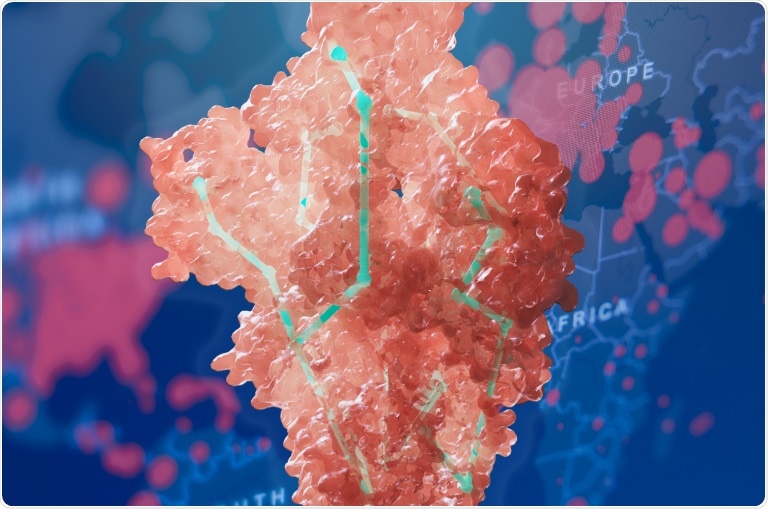Researchers, headed by the Duke University Medical Center, have combined computation and structural biology to successfully identify how numerous mutations on the SARS-CoV-2 spike protein separately create variants that are potentially resistant to antibodies and are also more transmissible.

Translucent SARS-CoV-2 spike protein depicting vector skeleton. Image Credit: Duke University Medical Center.
One such variant, after acquiring mutations on the spike proteins, gained the potential to transmit from humans to mink and then back to humans. Other variants—such as Alpha, which was initially identified in the United Kingdom; Beta, which emerged in South Africa; and Gamma, which initially appeared in Brazil—developed spike mutations independently. These mutations helped them resist certain antibodies and improved their ability to spread quickly in human populations.
The team has published their results in the Science journal.
The spike on the surface of the virus helps SARS-CoV-2 enter into host cells. Changes on the spike protein determine transmissibility of the virus—how far and quickly it spreads. Some variations of the SARS-CoV-2 spike are occurring at different times and different places throughout the world, but have similar results, and it’s important to understand the mechanics of these spike mutations as we work to fight this pandemic.”
Priyamvada Acharya, PhD, Study Senior Author and Director, Division of Structural Biology, Duke Human Vaccine Institute
Acharya and collaborators, which included the study first author Sophie Gobeil, Ph.D., and the co-corresponding author Rory Henderson, Ph.D., designed structural models to detect changes in the spike protein of the virus.
While cryo-electron microscopy enabled atomic-level visualization, the binding assays allowed the researchers to create simulations of the live virus that directly associated with its function in host cells. And from there, the researchers performed a computational analysis to design models that revealed the structural mechanisms at work.
By building a skeleton of the spike, we could see how the spike is moving, and how this movement changes with mutations. The different variant spikes are not moving the same way, but they accomplish the same task. The variants first appearing in South Africa and Brazil use one mechanism, while the UK and the mink variants use another mechanism.”
Rory Henderson, PhD, Study Co-Corresponding Author, Duke Human Vaccine Institute
All the variants had increased ability to attach to the host, specifically through the ACE2 receptor. The changes also resulted in viruses that were less sensitive to antibodies. This raises concerns that the constant build-up of spike mutations may decrease the efficiency of present-day vaccines.
According to Gobeil, the study highlighted the virus’s complexity.
It’s amazing how many different ways the virus comes up with to be more infectious and invasive. Nature is clever.”
Sophie Gobeil, PhD, Study First Author, Duke Human Vaccine Institute
Source:
Journal reference:
Gobeil, S. M.-C., et al. (2021) Effect of natural mutations of SARS-CoV-2 on spike structure, conformation, and antigenicity. Science. doi.org/10.1126/science.abi6226.